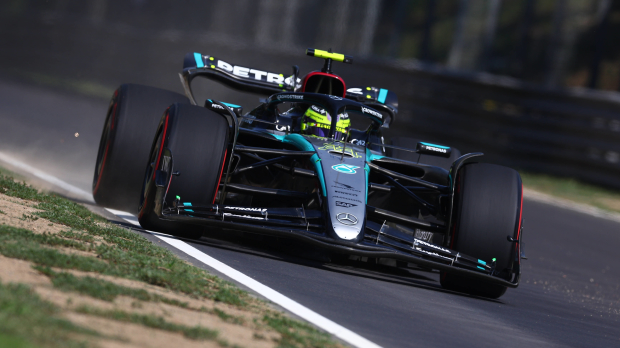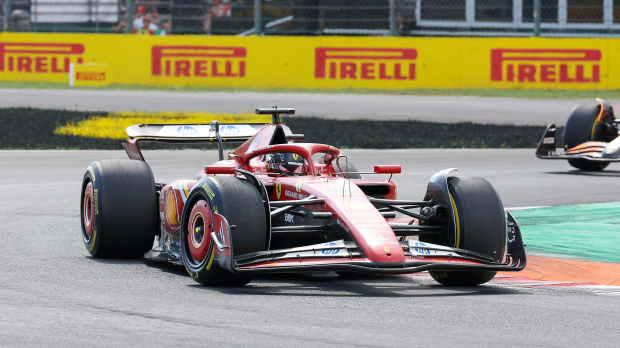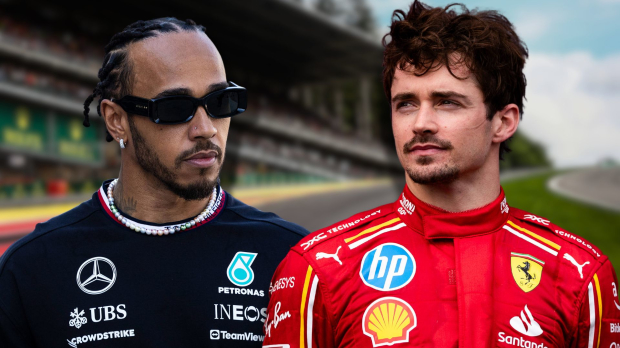A despondent Lewis Hamilton could not contain his disappointment after finishing fifth in Sunday’s Italian Grand Prix at Monza.
The seven-time Formula 1 world champion enjoyed a surprise pair of victories earlier this summer, winning at both Silverstone and Spa-Francorchamps ahead of the mid-season break, but Mercedes’ resurgence has been quelled since F1’s return.
Having crossed the line a lowly eighth in Zandvoort the previous weekend, Hamilton was unable to contend for victory at Monza, with Mercedes’ W15 significantly down on the long-run speed set by pacesetters McLaren and eventual winners Ferrari.
“The only positive to take is that we have good reliability, but everyone around us did too,” he said after the race. “Ultimately we didn’t have the race pace today – I’m not sure why.”
Having taken more points than any other driver in the five grands prix between Spain and Belgium, Hamilton is no longer closing on the Ferrari and McLaren drivers ahead of him in the standings, instead slipping further away as rivals continue to eek out performance gains.
Though Mercedes had rallied to propel themselves back towards the front of the field with an impressive rate of development earlier in the campaign, their progress appears to have been quelled for now at least, leaving Hamilton and team-mate George Russell scrapping for points in the upper midfield rather than the wins both men desire.
Why do Mercedes seem to have dropped back?

The dip in form seems to be part of what has become an increasingly volatile development cycle in Formula 1. The running order from the beginning of the season, which had Red Bull at the front, followed by Ferrari, then Mercedes and with McLaren further behind, has begun shifting wildly from weekend to weekend.
Though McLaren seem to have consistently been either the fastest or second fastest car since the Miami Grand Prix, Red Bull’s pace has nosedived, sending them steadily backwards, while Ferrari and Mercedes’ speed has varied significantly from track to track.
That has made it difficult for Hamilton and plenty of his rivals to maintain any kind of momentum – one week they may by flying out front, the next battling with the also-rans to score mediocre points finishes.
Post-race, Hamilton was quick to point out that Mercedes were simply unable to match the pace of the Ferraris, who were running nine upgrades on their cars on home soil and were able to match the pace of the McLaren for long periods as they won for the first time in eight grands prix.
“Even if I had started further ahead [on the grid], the Ferraris would have come out ahead,” Hamilton said. “They had more pace than us this weekend – they had an upgrade and we didn’t, that’s just how it goes.
“It was inevitable they would be quick compared to us, but I wish we were closer and more in the fight. We had more degradation than the cars ahead.”
Why might Hamilton have benefitted at Monza?

In the short-term, it is clear why Hamilton has been left downbeat – if this was, as it seemed, an impressive step forward for Ferrari which puts them in a stronger position between now and the season finale in Abu Dhabi, than Hamilton is going to require a significant upgrade from Mercedes themselves if he is going to have any hope of beating them and McLaren and adding to his tally of 105 race victories.
But in the long run, Ferrari will be Hamilton’s home from 2025 onwards. And given the enormous regulation change coming in 2026, most teams’ 2025 cars will remain very similar to their machines from this year. Therefore, progress made by Ferrari now will be progress Hamilton inherits in a few months’ time.
That Ferrari made their upgrade package work at the first attempt bodes well, with rivals including Mercedes and Red Bull having toiled with developments of their own at recent races. Mercedes ran different specifications of floors in free practice at Monza, one new and one old, to try to understand more about which actually offered them better performance.

Red Bull, meanwhile, have been retroactively dismantling upgrades they have put on their RB20 over the course of the season as the car has steadily become worse over time. It may sound pretty straightforward that a new upgrade package equals a faster car, but that hasn’t always been the case in this F1 season, and so Ferrari can be very pleased with their efforts.
But it wasn’t just the upgrades that led to this victory. Ferrari also delivered a masterstroke in strategy by leaving Charles Leclerc out on track one a one-stop strategy when the leading McLarens stopped for a second time. They knew their car was lighter on its tyres, and smartly gambled that they could maintain enough of a gap to win.
In doing so, they went a long way to banishing their (justified) reputation as strategic blunderers over the past few years, punishing an error made by their rivals and maximising their own performance in equal measure.
There are of course still eight races to go before Hamilton switches Mercedes silver for Ferrari scarlet.
But if the Scuderia are able to maintain their newfound speed and competence into 2025 and beyond, then the step forward they took on Sunday could well turn out to be as big a win for Hamilton as anyone else, though it may not feel like it just yet.





